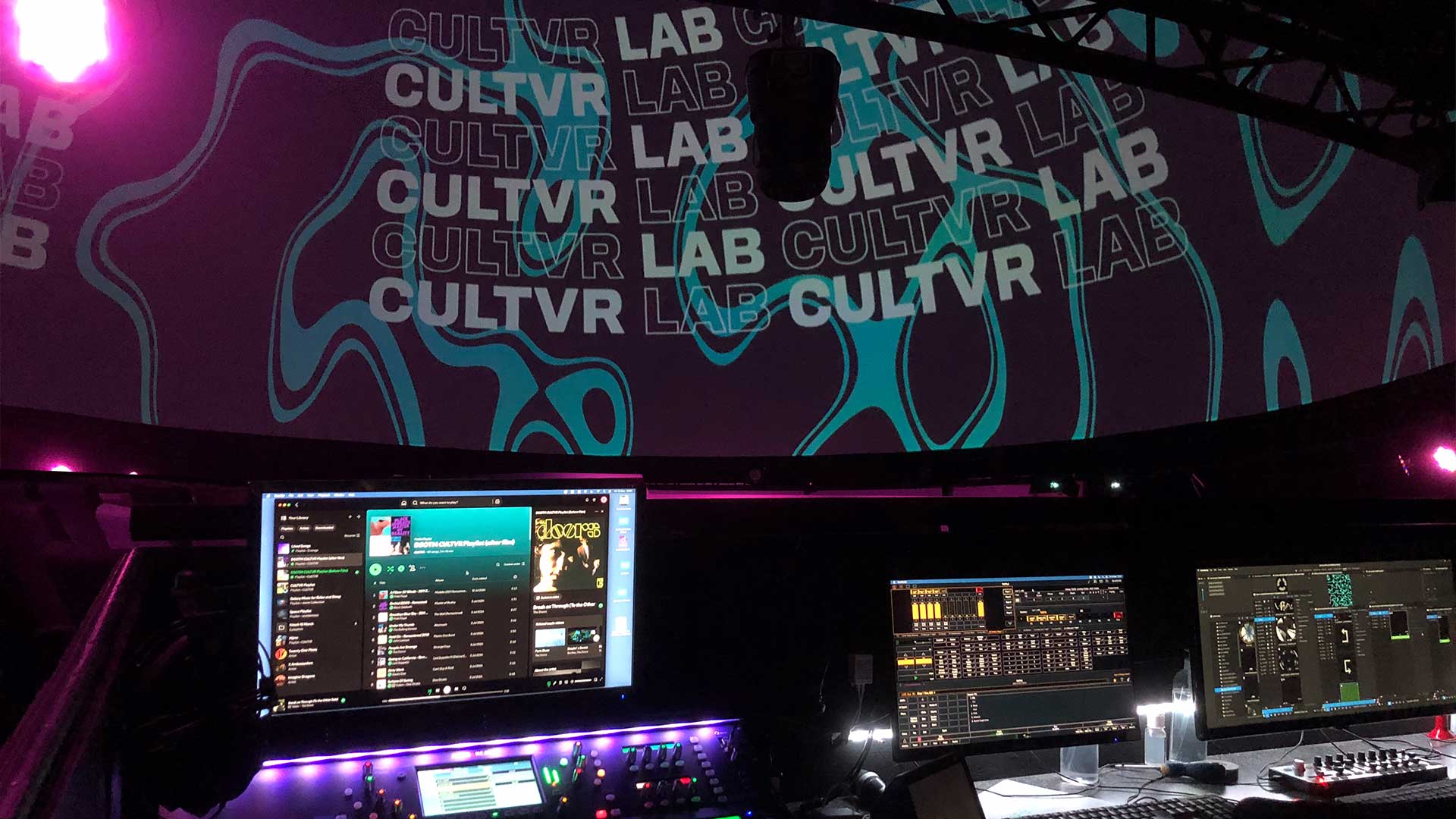
I just had my first experience of a rather different video format. And I loved it. The material certainly helped. Last year was the 50th anniversary of Pink Floyd’s ‘The Dark Side of the Moon’, originally released back in 1973 on vinyl, cassette and 8-track. And on quadraphonic vinyl! It’s a documented fact* that more weed was smoked listening to Dark Side in the 1970s than was consumed by US forces during the whole Vietnam War.
The album transferred to new formats as they arrived, of course, while every key anniversary has brought new editions, remasters, remixes: on Discogs there are more than 1000 different versions listed for ‘The Dark Side of the Moon’.
I have bought more than my fair share, in addition to seeing it live many times. I was too young for the 1974 tour (my first Floyd gigs were the 1980 and 1981 Earls Court ‘The Wall’ shows), but I’ve seen most of Dark Side performed by Gilmour’s version of Floyd, and multiple times by Roger, all accompanied by Floyd-level special effects, the classic Ian Emes animations on the circular screen, most recently giant spinning laser pyramids on Waters’ Us & Them tour. I have many of those gigs on DVD or Blu-ray. I have the 5.1 surround mix, and the Dolby Atmos mix.
It’s not even my favourite Floyd album (I’d take ‘Animals’ or ‘Meddle’ over ‘Dark Side’), but it’s undeniably iconic, and I love it still.
[* Not really. But probably.]
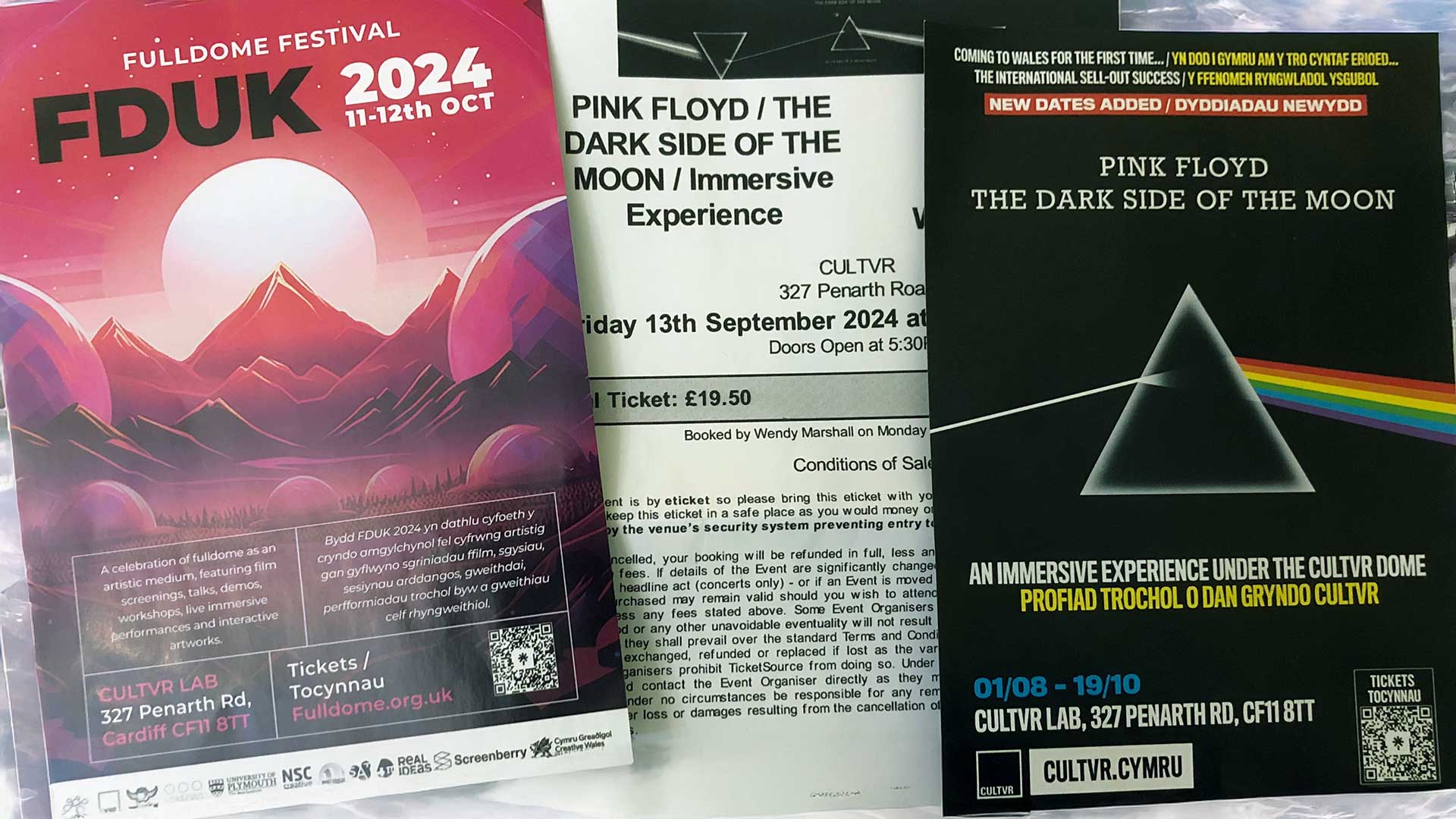
So when my sister bought me a ticket to go hear the album played in a converted warehouse off the Penarth Road in Cardiff, Wales, I was certainly up for it. I just didn’t expect, given my extended familiarity with the piece, to be quite so blown away by it.
This version was the 'fulldome' presentation released last year by NSC Creative at the National Space Centre in Leicester, UK, working closely with Pink Floyd’s long time creative collaborator Aubrey Powell from Hipgnosis. It’s heavily loaded with NASA footage, which is all non-copyright, by which we may assume that Pink Floyd’s representatives were being fairly careful with the pennies (I have heard, but not confirmed, a budget of £100,000, peanuts by movie standards), but it incorporates the NASA visuals within a brilliant 44-minute presentation that rivets you to your seat.
Those seats are near-horizontal, and the screen a complete hemisphere hanging above you, hence ‘fulldome’. So clearly this is not a work that can run in conventional cinemas, nor will you be able to enjoy it in your home cinema, no matter how wide your screen or how much you’ve spent on automated masking panels. It needs a special venue.
The Floyd film toured the world last year, showing in 38 such special venues, and it’s no surprise that those were dominantly planetariums. In Australia it was played at Scitech in Perth, and at the Melbourne Planetarium in Museum Victoria, also home to the Dome Under Film Festival. The projection system in Melbourne uses a spherical mirror and a single projector. In Leicester’s Space Centre they have 13 professional WUXGA (1920x1200) projectors.
CULTVR Lab
Cardiff is different. CULTVR Lab, as the venue is called, is no planetarium. Nor is it just a screen and a sound system. It’s a laboratory: a not-for-profit immersive research lab which houses five companies across different disciplines, so that the 360° film content is one side of it, but there’s also an independent record label, a music company, a graphic design studio, and two different VFX/animation studios.
So the Floyd shows are really just bringing in some much needed money; they took a licence to show the Dark Side film during 2024, rather than 2023, because they’d been off making their own projects for most of 2023, including 360° films. Indeed they built their fulldome primarily to preview their own creations, to learn what worked and what didn’t, because 360° filming has some unique considerations. For example, as with IMAX you can’t do much rapid cutting (10 seconds minimum); unlike IMAX you’re going to be filming yourself and other cameras, the sky and the ground, as well as your subject. How do you light that? How do you direct the audience’s attention? How do you stop them throwing up?
Also, how do you get a finished 360° film in front of an audience? Planetariums may have signed up for the Floyd movie (it is rumoured to have saved the budgets of some of them from collapse), but they are apparently a bit stuffy in general about opening up for more varied content.
And of course even hemispherical screens are only showing half the 360° picture. One obvious course might be to get the films into VR goggles, allowing users to look anywhere. But the 360° filmmakers, at CULTVR Lab at least, aren’t overly keen on the goggles concept because they really prefer the traditional shared experience of being in a cinema where everyone reacts together. And quite right too. I’d add to that the issue of sound, because cinemas can have great sound, and surround sound, while most VR goggles have pretty crap stereo sound without surround, and don’t get me started on pseudo-surround.
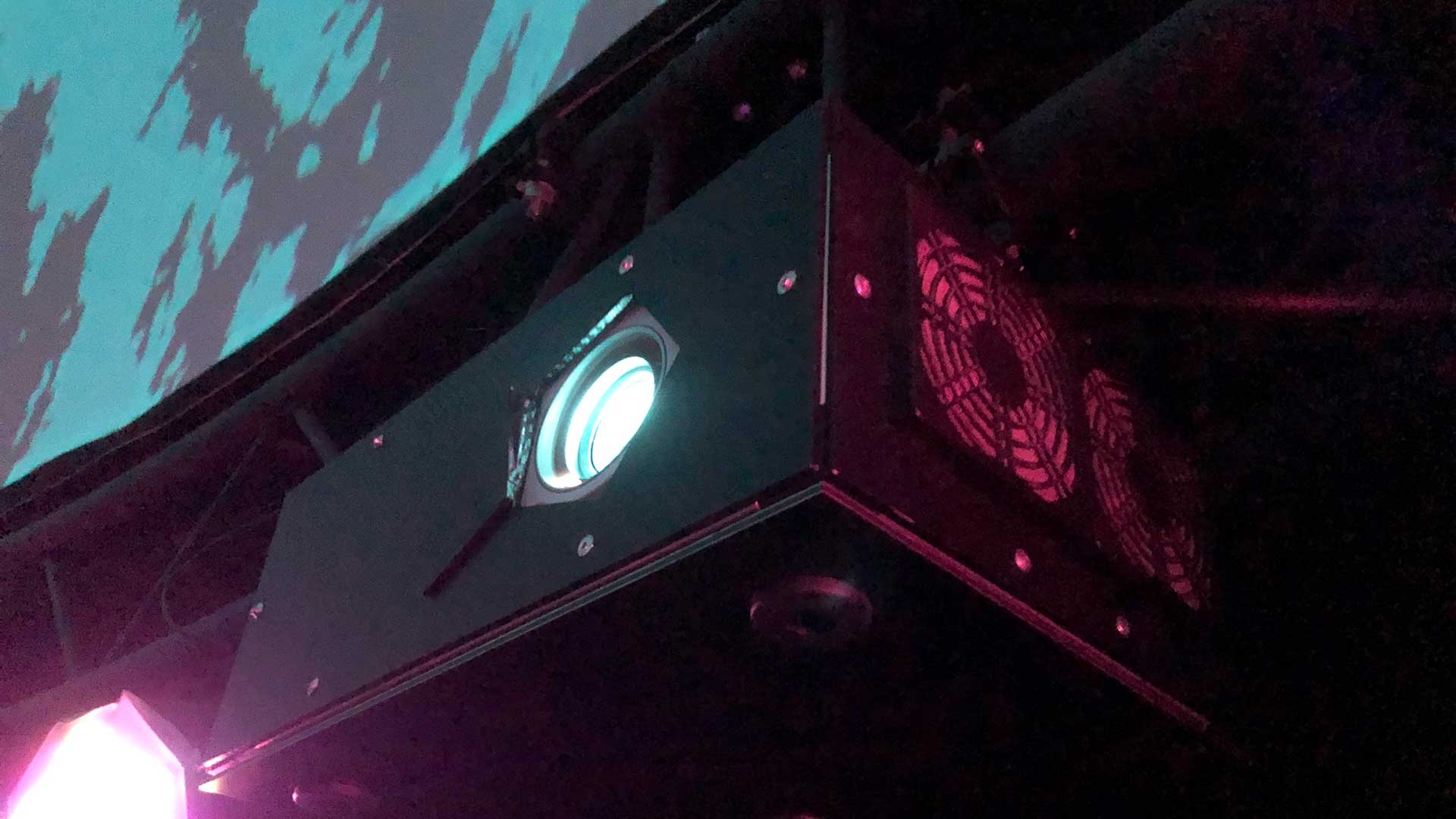
I know all this 360° information only because – in the manner of cash-strapped arts venues the world over – it was the CULTVR artists themselves who were welcoming the punters turning up for the trippy Floyd experience at this exceedingly cool venue. Selling tickets at the door, and very up for a chat, was Rhys Davies, part of CULTVR’s 360° film-making company 4Pi Productions; his bio describes him as a multimedia-based artist and curator who coordinates 4Pi’s filming projects.
He’s also a good bloke and knows his tech. Rhys explained that CULTVR obviously didn’t have a planetarium-sized budget, and needed to build their dome as economically as possible. A professional planetarium projector can cost from hundreds of thousands of dollars into the millions. For the CULTVR dome they chose a budget consumer projector – the BenQ W1050, a model which sold at around £650 (A$1200).
They use 12 of these in front projection mode, all arrayed around the bottom of the dome: seven illuminate the bottom layer of the hemispherical screen, with four more aimed above those, and the last illuminating the dome apex.
These are 1080p projectors, and the final image is 4096 x 4096; some basic maths indicates there must be a whole lot of overlap. Anyone who has spent some time aligning perhaps three projectors for a big commercial event will turn cold and start sweating at the thought of aligning 12 of them onto a hemisphere. There is also the need to map the 4096 square onto a hemispherical screen without distortion.
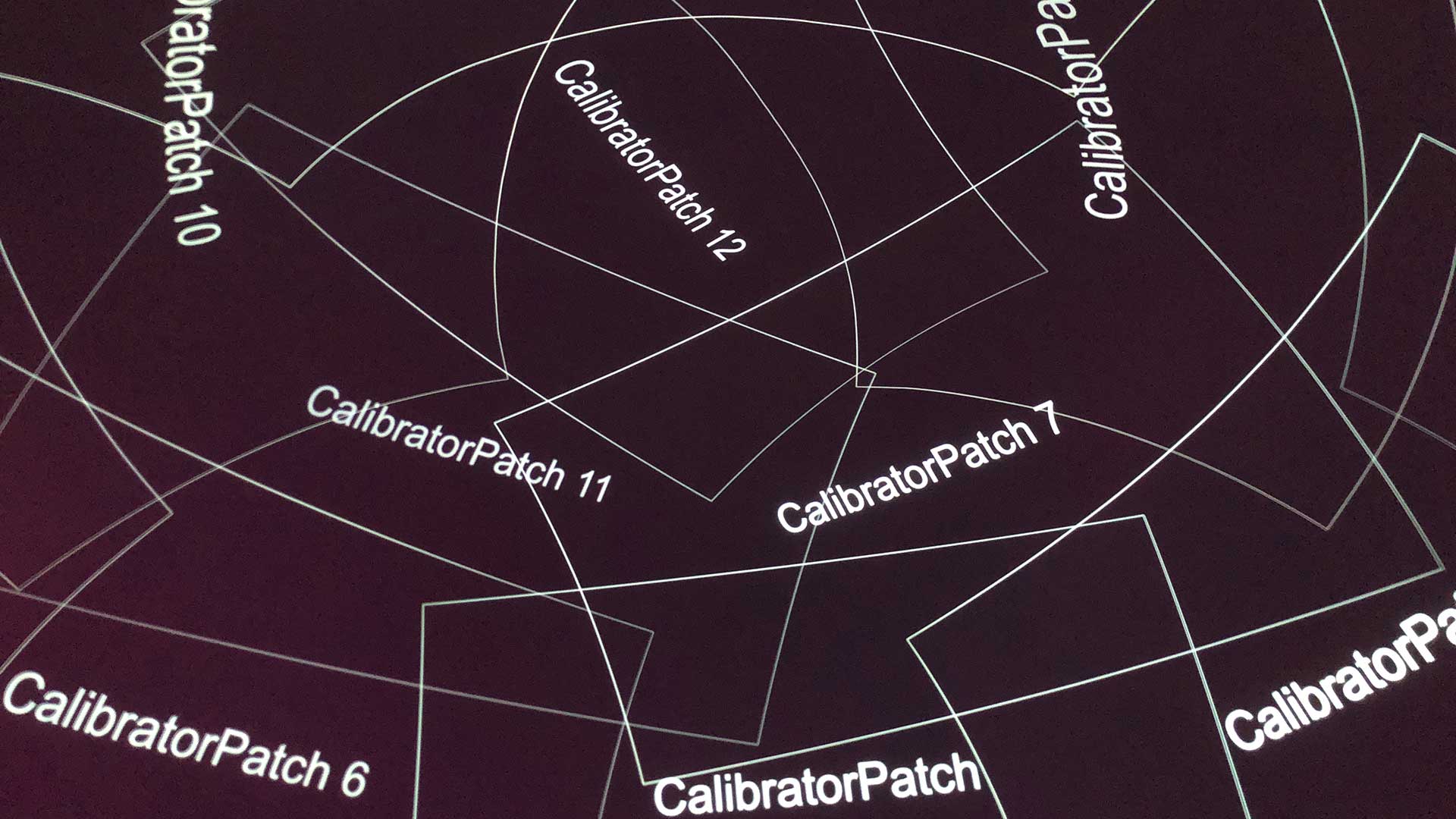
The answer to this is apparently a company in Ukraine, Fulldome.pro, which not only makes and sells domes, but is the master at software stitching multiple images together seamlessly. And it was seamless.
After the show Rhys kindly filled the dome with the Calibrator Patches (above), showing the zones for each projector (see above). I’d assume that one requirement must be that the projector blacks are pretty good and dark, otherwise the stitching overlays would be lifted in brightness. I couldn’t see any of that; it delivered as one huge image.
It’s also hard to believe that the total resolution across that dome was only a little over 4K (although this is also true of digital IMAX theatres, like the new one in Sydney). I was equally surprised that the Floyd film was running at just 30fps. At one point there were planetary orbits zooming around the screen at incredible pace, then space rocks hurtling at the viewer; the trippy On The Run animation sequence was dazzling, the detail in the clocks and astrolabes of Time was spectacular.
There was no sign of judder nor any lack of smoothness, and I don’t think 3D would have improved it one jot. Polarised 3D would anyway drop the brightness significantly, although this (brightness, not 3D) is something CULTVR is about to address in an upcoming upgrade from the 2200-lumen BenQ projectors to new models up around 4000 lumens (brand and model not revealed!). Given the quality of the results from the dozen W1050s, the upgraded system should simply ping from the screen.
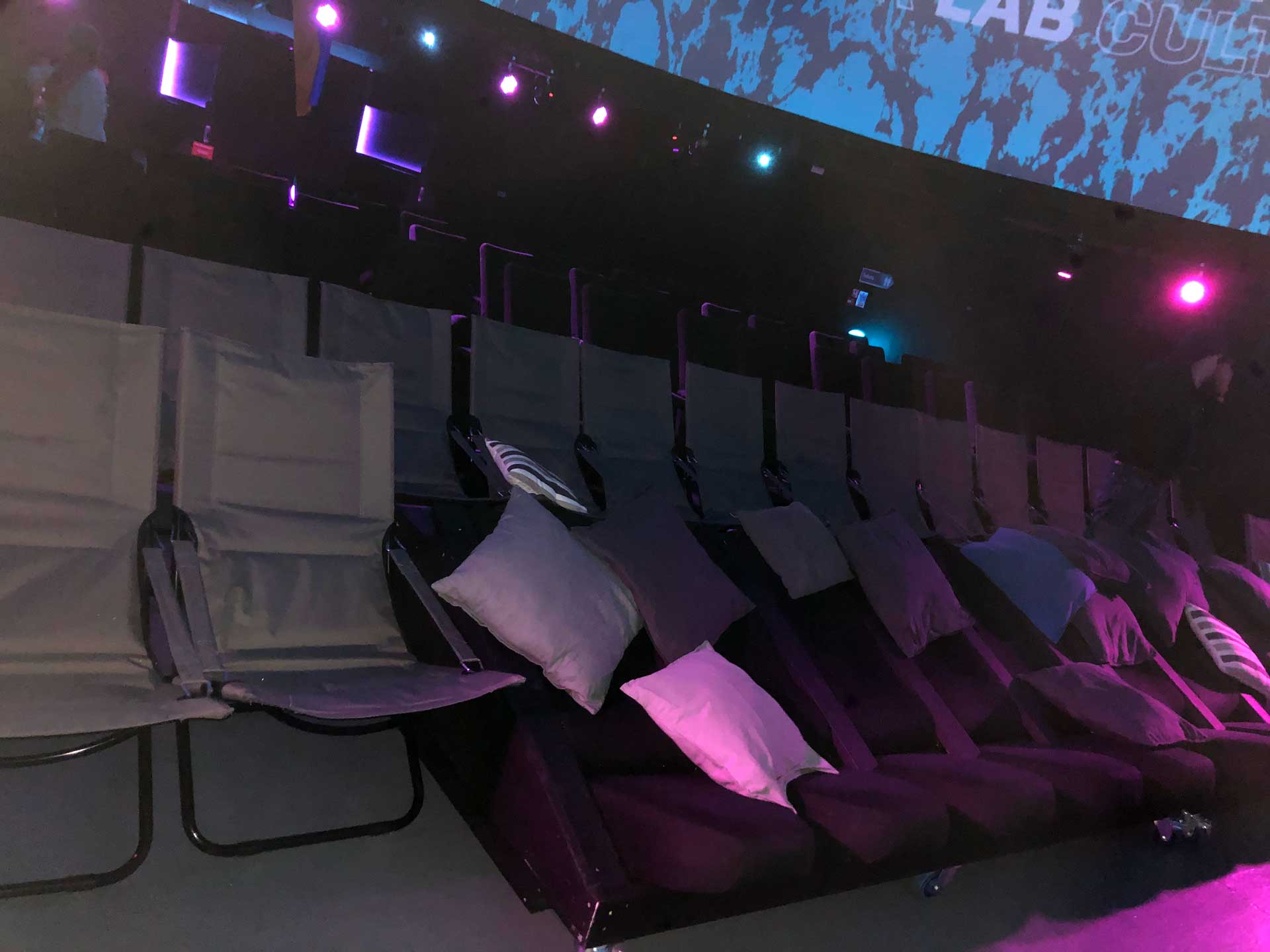
Go see some fulldome
So I heartily recommend a fulldome experience. The Floyd creation was intended to be a one-year-only presentation for the 50th anniversary in 2023, so I was lucky to catch it at all in 2024. It’s at the Cardiff venue until 19th October, and Rhys says they may have another showing around Christmas. Seating tips: get there early and you can reserve your place. Go central, obviously; the first and second rows of cinema-style seating will give you the best sound (the Floyd show was in 5.1, as the Atmos mix of ‘Dark Side’ didn’t come out until later), but the third or fourth rows do give you a more complete view of the screen.
But as we’ve seen, CULTVR Lab isn’t really about Floyd shows at all. They also run regular shows of 4Pi’s own movies, and other global fulldome material, including an FDUK (fulldome UK) festival.
And in their cross-discipline way, once the dome was in place for the 360° movies, the resident record label brought in bands for live performances with “slowly rolling camera” vision up on the dome screen; they’ve held dance events at CULTVR, and theatre; DJ Yoda will be getting down with the hip-hop crowd in February.
Too far from Cardiff? I’m tempted to suggest you might build your own fulldome: a 10-metre dome from the Ukrainian company costs something like US$100k-$200k depending on options, plus your projectors and sound system… pricey, sure, but I’ve seen conventional home cinemas that have come in higher than that. Demolish that gazebo and put one in your garden.
More practical, perhaps, would be to search for ‘fulldome’ experiences in your own neck of the woods. While many planetariums have resisted widening their remit to show other types of fulldome movies, Rhys did say that in some cases where one planetarium has relented, they’ve had great success, and then others have followed. In Australia the Melbourne Planetarium is clearly one such leader, and I gather Sydney fulldome showings may be on the cards in the near future. I aim to be there, fully horizontal, to enjoy the show.







